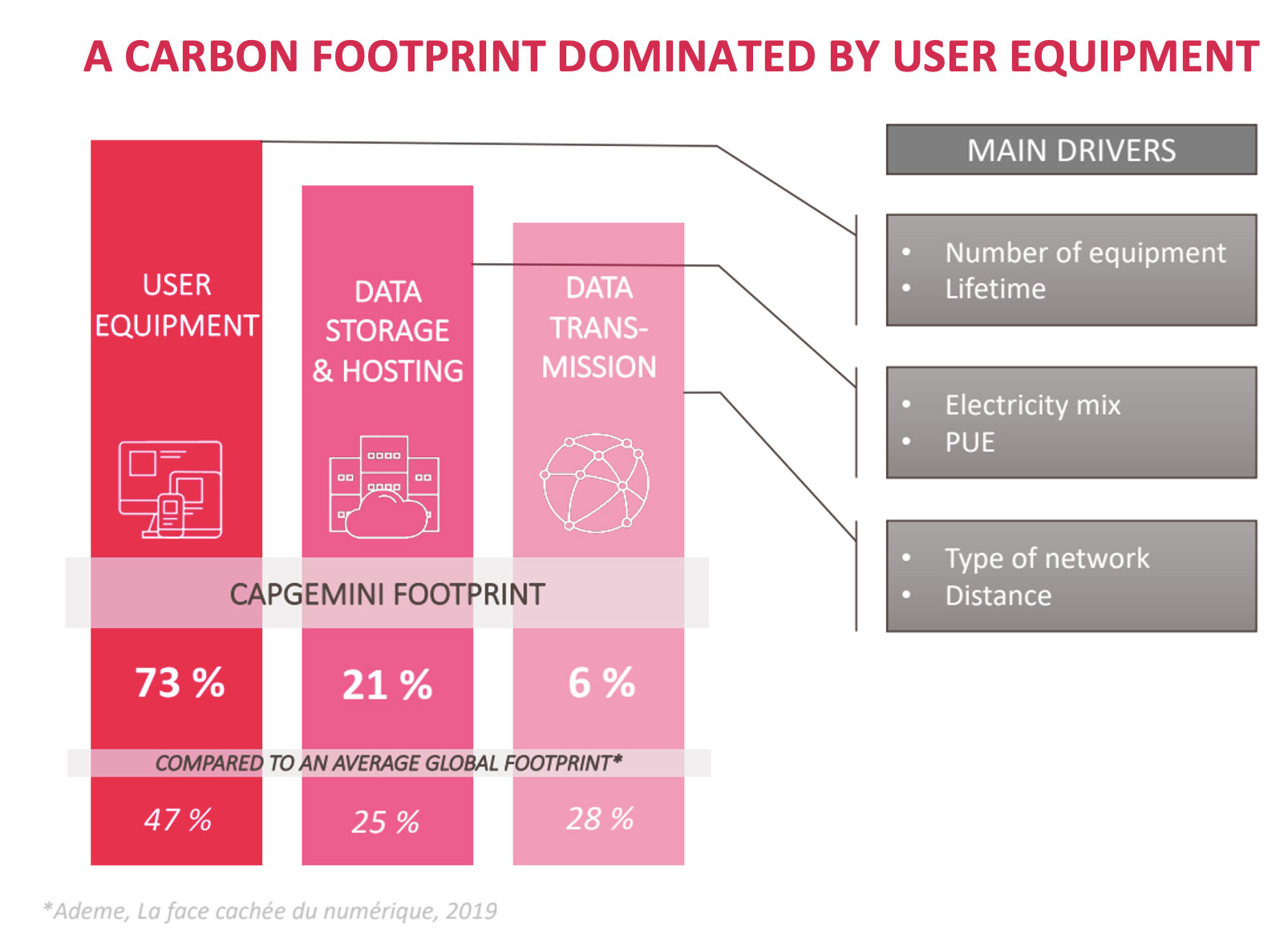Aligning Capgemini France’ IT system with corporate climate goals

Quantis worked in partnership with Capgemini Invent, for Capgemini France’s IT department to assess its carbon footprint and outline an action plan to align the department with the company’s carbon neutrality and net zero goals.

Challenge
A global leader in consulting, technology services and digital transformation, Capgemini is at the forefront of innovation in the evolving world of cloud, digital and platforms. Recognizing the non-negligible environmental impact of ICT and its own potential to support its clients in reaching their climate goals as well as its own (carbon neutral by 2025 and net zero by 2030), the French multinational worked with Capgemini Invent and Quantis to run both a maturity analysis and a quantitative assessment of its environmental footprint to then shape an internal policy of digital sobriety.
Insights
The importance of digitalization and its impact on business models is rapidly growing. Until recently, digital technologies and services were perceived as dematerialized and as a result having a negligible environmental impact.
Though the full extent of digitalization’s environmental impact is not fully understood, it does indeed have real consequences for the environment. Considering the IT department when developing a climate strategy is a critical step in setting companies up for success to effectively reduce impacts and make meaningful progress on climate goals.
Capgemini Invent & Quantis Solution
To establish a clear reduction action plan to bring Capgemini closer to achieving its climate targets, Quantis first assessed the carbon footprint of Capgemini France’s IT system, including equipment and services hosted elsewhere by service providers (e.g. cloud data storage).
The assessment was broken down into four main categories: user equipment, data transmission, data storage & hosting, and applications. For each category, Quantis then identified the main drivers of impact, supported by sensitivity analyses on specific parameters such as the location of data servers, electricity mix, PUE, etc., and made recommendations on the main levers of impact reduction.
Combining the findings with information from the maturity assessment of the sustainable IT policy conducted simultaneously by Capgemini Invent, we were able to determine the level of maturity and diffusion of sustainable IT policy within Capgemini and the paint points for different departments and users, including the IT, CSR and HR departments, as well as employees.
Impact
Building on the results of the studies, Quantis and CapgeminiInvent identified essential actions for the company’s IT department to take to align with Capgemini’s corporate commitment: reducing absolute scope 1 and 2 GHG emissions by 80% by 2030 from a 2015 base year and reducing absolute scope 3 GHG emissions from purchased goods and services by 50% by 2030 from a 2015 base year. A similar study could be undertaken by any company with a significant IT system, such as banks, consulting firms and digital solutions companies.

Areas of expertise
Sector
Project Manager

Marion Leblon
Senior Sustainability Consultant – ICT Sector Lead
“By working with Quantis to assess the carbon footprint of our IT system, we are now able to understand better where the biggest environmental impacts are coming from to be able to prioritize actions and monitor processes. This study is paving the way for our IT department to contribute to its reduction target but also to Capgemini climate targets.”
Laurence Jumeaux, Vice-President Future of technology
Capgemini
Latest case studies

Case Study
Accor
Quantis supported Accor, a world leading hospitality group, to develop a new methodology to ensure the accuracy of Accor’s emission calculations while simplifying both the data collection process and making it possible at hotel level.

Case Study
Manzanita Capital
Quantis supported Manzanita Capital, a private equity fund specializing in luxury and premium niche beauty companies, to guide their portfolio companies towards a more sustainable future.

Case Study
Pharma Company
Quantis supported a global pharmaceuticals company in understanding its impacts and dependencies on nature, assessing the related risks and opportunities, and evaluating the need for an overarching biodiversity strategy.
